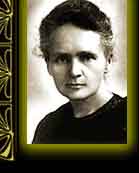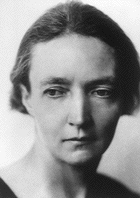
ROSALIND AN ICON?

Picture 5
Rosiland Franklin’s place in the history of science and in wider social history is assured. She will be remembered for her role in the discovery of the double helix. Her role in this discovery was overlooked at the time and it was due largely to the efforts of feminist scholars that her contribution has been reassessed over the past 50 years. More significantly, her story will continue to have a prominent place in the study and teaching of the history of science particularly as it relates to the difficulties and discrimination many very capable academic women scientists faced, and still encounter, during their careers (Etzkowitz, Kemelgor and Uzzi, 2000).
 Picture
6
Picture
6
 For example, Nobel Prize winners Marie Curie
(1903) and her daughter Irene (1935) were never elected members of the French
Academie des Sciences (Noordenbos, 2002).
For example, Nobel Prize winners Marie Curie
(1903) and her daughter Irene (1935) were never elected members of the French
Academie des Sciences (Noordenbos, 2002).
Picture 7
At Harvard University no woman professor
gained tenure in physics until 1992 (Bridges, 2003).
Even today across the member states of the European Union women make up
approximately half of the science undergraduate population but account for
between 5 and 17% of full science professors. This, according to Wilson (2001),
impacts on the composition of committees that ‘mould and shape the wider
scientific agenda’.
We
cannot know how Rosiland Franklin would have reacted to becoming a ‘poster
girl’ for feminism. Her friend Anne Piper (1998), a one time assistant
lecturer in Applied Mathematics at Bristol University, paints a picture of a
dedicated scholar who was hurt by various slights she encountered at King’s
College, leading her to think that King’s did not take women seriously.
Despite this, she pursued her research and publications vigorously and
successfully until her untimely death. In this respect she will remain an
inspiration to women scientists and, indeed, all scientists.
References for this
page only:
Piper, A. (1998),
‘Light on a dark lady’, Trends in Biochemical Sciences, 23, April,
pp. 151-154
Wilson, E. (2001),
‘Breaking Glass?’, Trends in Cell Biology, 11, 11, pp. 453-455
Bridges, B.A. (2003),
‘Rosalind Franklin. The Dark Lady of DNA – Book review’, DNA Repair,
2, 3, pp. 359-360
Noordenbos, G.
(2002), ‘Women in Academies of Sciences: From exclusion to exception’, Women’s
Studies International Forum, 25, 1, pp. 127-137
Etzkowitz, H.,
Kemelgor, C. and Uzzi, B. (2000), Athena Unbound: The Advancement of Women in
Science and Technology, Cambridge University Press.